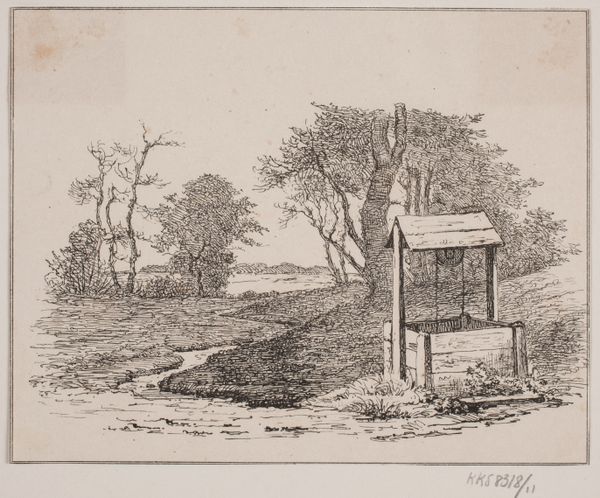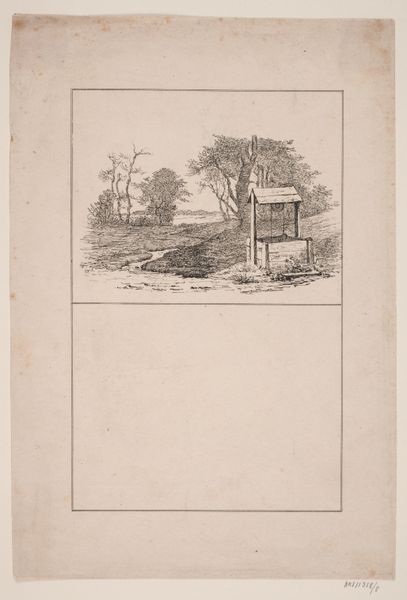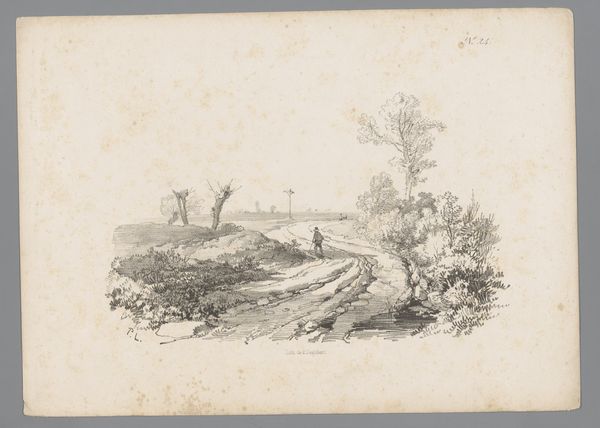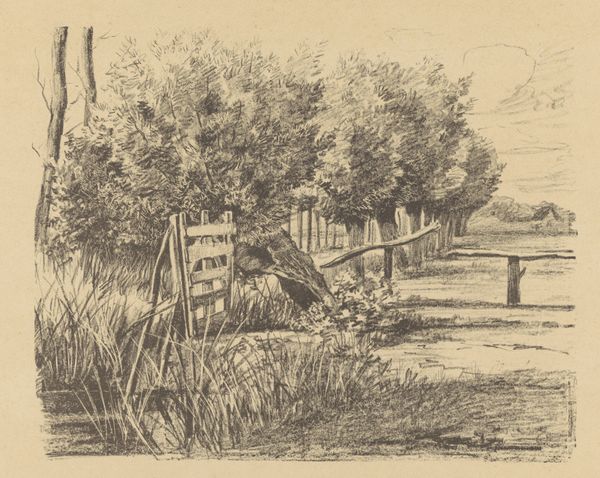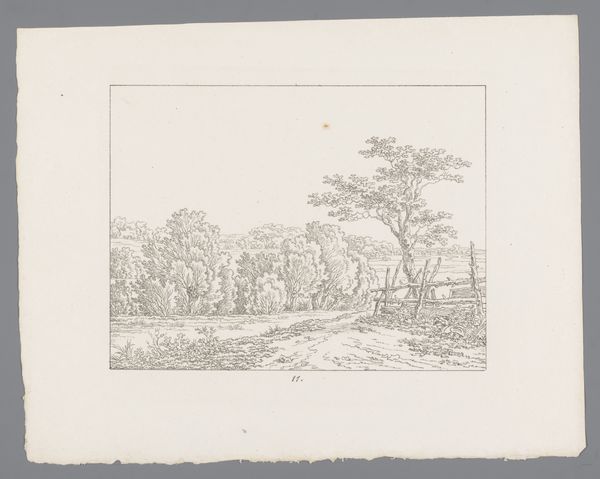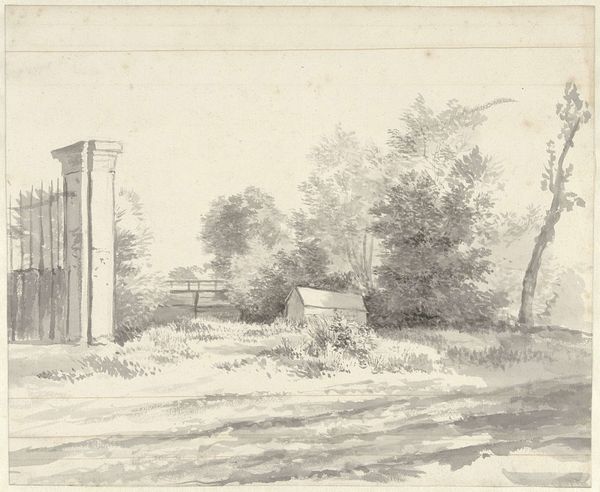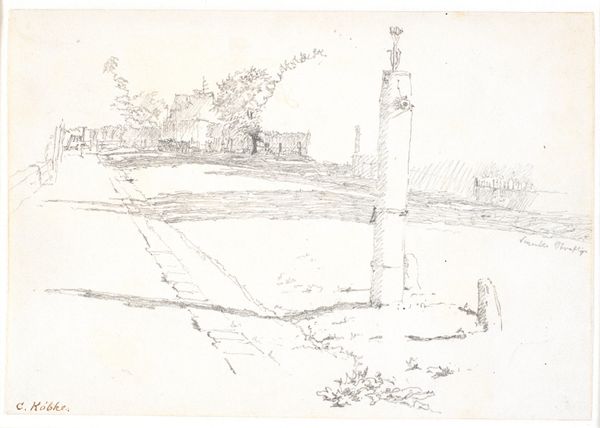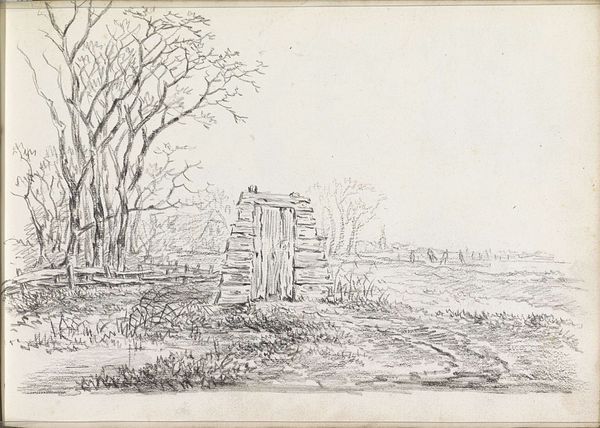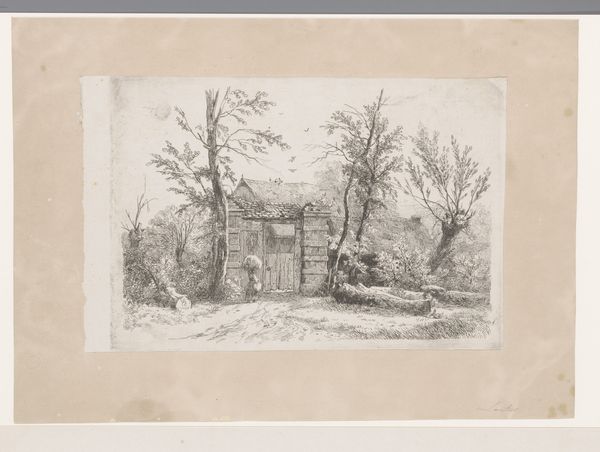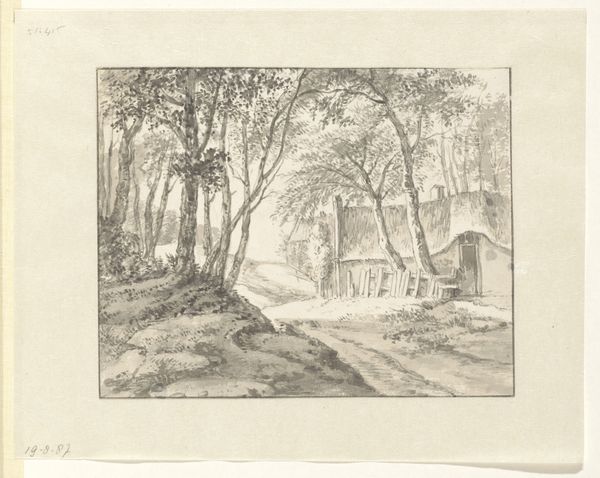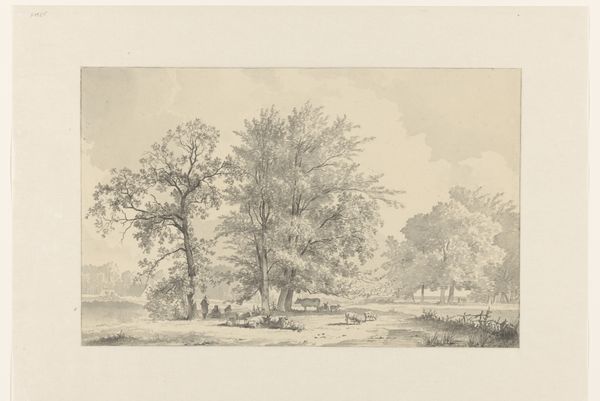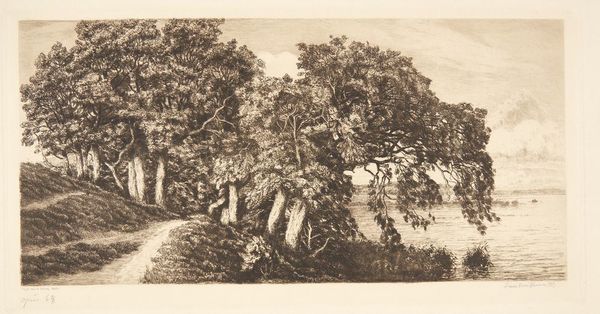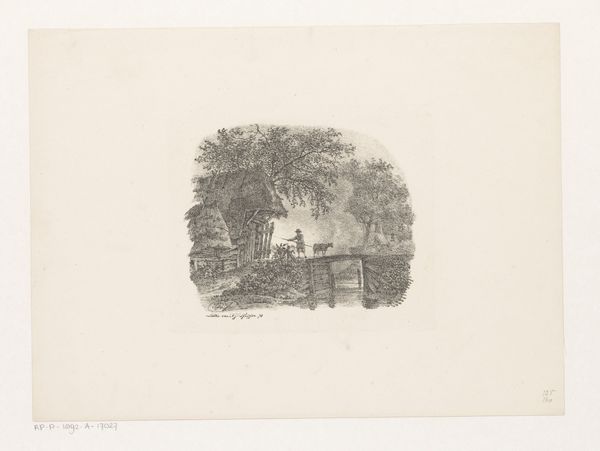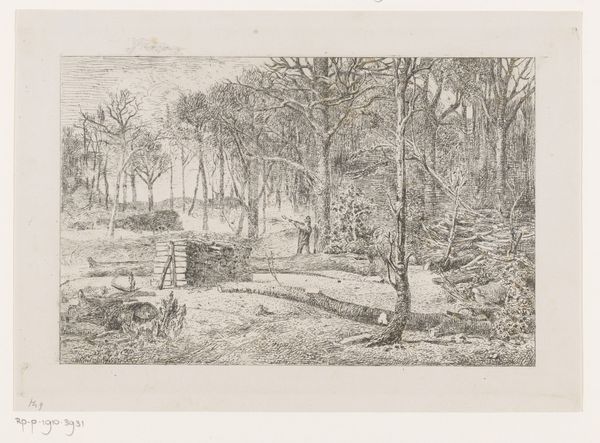
Kilden. Illustration til Kaalunds "Fabler for Børn". Se kommentar fra arkkatalog. 1844
0:00
0:00
drawing, paper, ink
#
drawing
#
landscape
#
etching
#
paper
#
ink
#
romanticism
#
realism
Dimensions: 119 mm (height) x 173 mm (width) (bladmaal)
Editor: This is "Kilden. Illustration til Kaalunds 'Fabler for Børn'," or "The Spring. Illustration for Kaalund's 'Fables for Children'," a pen and ink drawing on paper by Johan Thomas Lundbye from 1844. I am immediately struck by the stillness in this rural scene. The crispness of the line work, the quiet composition—it all evokes a kind of hushed reverence. What elements of the piece strike you as most significant? Curator: The formal composition is quite intriguing. Consider how the artist leads our eye. We enter at the well, then trace the subtle path receding into the landscape, toward a horizon barely articulated. It demonstrates a careful balancing of positive and negative space. Editor: So you are seeing a deliberate organization of elements, even in this seemingly simple scene. Curator: Precisely. And note the quality of line. The fineness and precision with which the well is rendered contrasts beautifully with the more loosely defined foliage and distant trees. Do you notice any specific techniques that create this distinction? Editor: I see how the thicker lines give form to the well itself, while the delicate, almost feathery strokes define the natural world around it. That adds to the sense of quiet, like the scene is barely touched by human activity outside of the construction of the well. Curator: Yes, exactly. Lundbye expertly utilizes contrast and variation in line weight to define forms and create depth. There's a dialogue occurring between the geometric form of the well and the organic forms of nature. Editor: So much is happening with just ink and paper. Looking at this, I now appreciate how strategic line work can be in establishing space and creating balance in what initially appeared to be an everyday pastoral scene. Curator: Indeed. Through meticulous observation and skillful rendering, Lundbye elevates a simple spring into a study of form, texture, and spatial relationships. It invites us to consider the art of seeing itself.
Comments
No comments
Be the first to comment and join the conversation on the ultimate creative platform.
